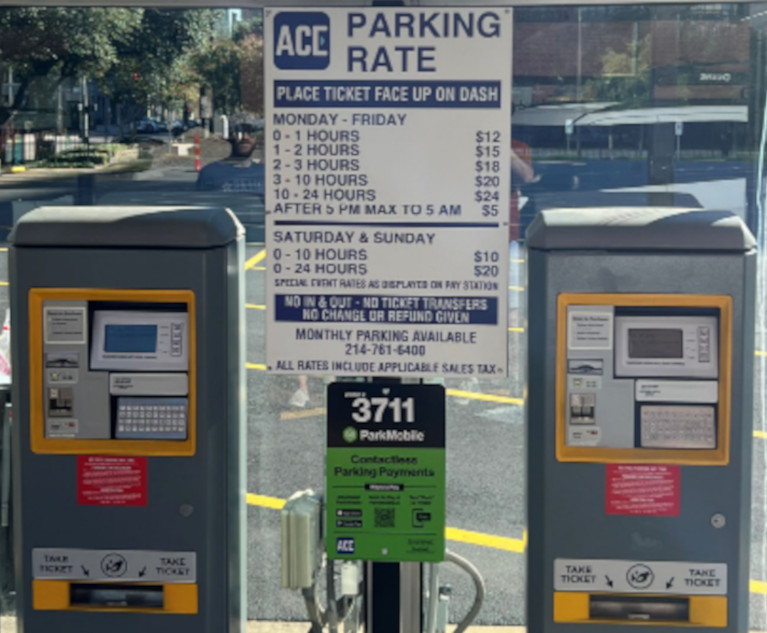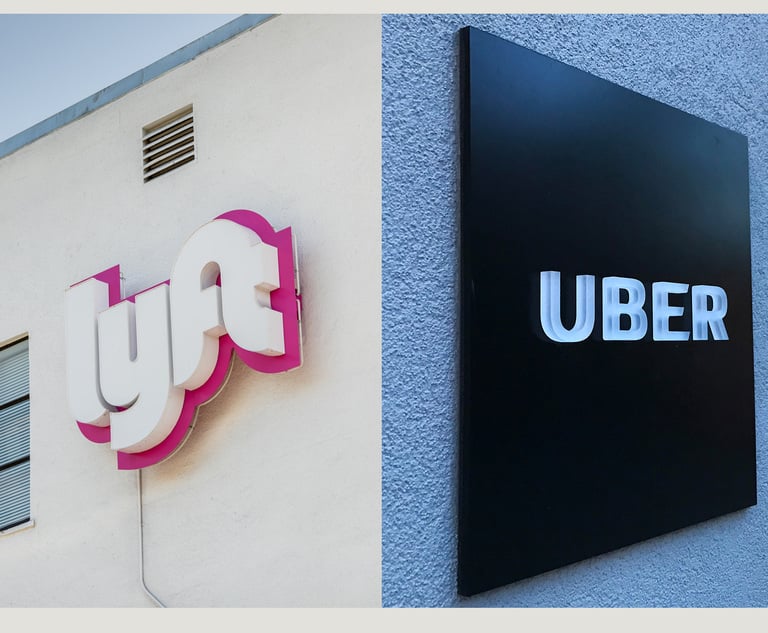Trump's Autonomous Car Guidance Puts Automakers in Driver's Seat
U.S. Department of Transportation Secretary Elaine Chao on Tuesday rolled out revamped federal guidance for autonomous vehicle manufacturers, putting the Trump administration's deregulatory stamp on this fast-developing industry.
September 12, 2017 at 04:53 PM
5 minute read
U.S. Department of Transportation Secretary Elaine Chao on Tuesday rolled out revamped federal guidance for autonomous vehicle manufacturers, putting the Trump administration's deregulatory stamp on the fast-developing industry.
The recommendations, dubbed “A Vision for Safety 2.0,” largely builds on the voluntary blueprint laid out for driverless car designers and developers in September 2016 by the Obama administration. But it also makes a number of industry-sought changes and clearly sets the National Highway Traffic Safety Administration's role as one of championing—and not intensely regulating—the technology.
“Emerging technologies require an approach that ensures safety while encouraging innovation and preserving creativity and innovation,” Chao said in a speech at the University of Michigan's Mcity test facility for driverless vehicles. “Our goal at the Department of Transportation is to help usher in this new era of transportation innovation and safety, ensuring that our country remains a global leader in autonomous technology.”
Here are a few takeaways from the new policies issued Tuesday.
|Feds want states to stay in their regulatory lanes.
The guidance doesn't mandate that states stop issuing regulations for autonomous vehicles. Congress may ultimately do that on its own, prodded by automakers eager for a common set of rules across the 50 states. But federal regulators do encourage states to stick to licensing drivers, scrutinizing traffic laws “that may serve as barriers” to driverless cars, conducting safety inspections and maintaining a good infrastructure—while leaving oversight of the hairier autonomous details to the manufacturers and the feds.
The NHTSA “strongly encourages states not to codify this voluntary guidance (that is, incorporate it into state statutes) as a legal requirement,” the guidance says. “Allowing NHTSA alone to regulate the safety design and performance aspects of [automated driving systems] technology will help avoid conflicting federal and state laws and regulations that could impede deployment.”
What does that mean for California, which has spent years now developing rules for the testing and operation of self-driving cars? The state's Department of Motor Vehicles issued a statement saying officials are reviewing the latest federal changes. The DMV is expected to release the final driverless car regulations by the end of the year.
Aside from autonomous vehicle operations, there's still room for California to regulate in areas such as auto insurance and liability, said Melody Drummond Hansen, an O'Melveny & Myers partner in the Silicon Valley office.
“Regardless of what the feds do, these are going to be issues that companies are going to continue to face on a state-by-state basis,” Hansen said.
|Automakers get more deference under this guidance.
The Obama administration asked manufacturers to voluntarily submit a 15-point safety assessment to offer assurance to regulators and the public before their vehicles hit the market. California's proposed regulations ask automakers to submit a copy of that assessment.
The new federal guidance cuts the number of safety points to 12. And it says manufacturers can publicly post those assessments themselves—there would be no need to submit them to the DOT for processing before rolling out their vehicles.
“Both the House legislation and NHTSA policy suggest there's a growing consensus that the technology shouldn't have to wait for these policies to be developed,” Hansen said.
The federal government's deference to manufacturers worries consumer groups.
“This isn't a vision for safety,” said John M. Simpson, privacy project director of Santa Monica-based Consumer Watchdog. “It's a road map that allows manufacturers to do whatever they want, wherever and whenever they want, turning our roads into private laboratories for robot cars with no regard for our safety.”
This content has been archived. It is available through our partners, LexisNexis® and Bloomberg Law.
To view this content, please continue to their sites.
Not a Lexis Subscriber?
Subscribe Now
Not a Bloomberg Law Subscriber?
Subscribe Now
NOT FOR REPRINT
© 2025 ALM Global, LLC, All Rights Reserved. Request academic re-use from www.copyright.com. All other uses, submit a request to [email protected]. For more information visit Asset & Logo Licensing.
You Might Like
View All

Uber Not Responsible for Turning Over Information on 'Dangerous Riders' to Competitor, Judge Finds
5 minute read
'A Fierce Battle of Expert Witnesses' Expected in Cybersecurity Spat

'That's Insane': Lawyers Weigh In on Fallout From Uber's User Agreement
7 minute readTrending Stories
Who Got The Work
Michael G. Bongiorno, Andrew Scott Dulberg and Elizabeth E. Driscoll from Wilmer Cutler Pickering Hale and Dorr have stepped in to represent Symbotic Inc., an A.I.-enabled technology platform that focuses on increasing supply chain efficiency, and other defendants in a pending shareholder derivative lawsuit. The case, filed Oct. 2 in Massachusetts District Court by the Brown Law Firm on behalf of Stephen Austen, accuses certain officers and directors of misleading investors in regard to Symbotic's potential for margin growth by failing to disclose that the company was not equipped to timely deploy its systems or manage expenses through project delays. The case, assigned to U.S. District Judge Nathaniel M. Gorton, is 1:24-cv-12522, Austen v. Cohen et al.
Who Got The Work
Edmund Polubinski and Marie Killmond of Davis Polk & Wardwell have entered appearances for data platform software development company MongoDB and other defendants in a pending shareholder derivative lawsuit. The action, filed Oct. 7 in New York Southern District Court by the Brown Law Firm, accuses the company's directors and/or officers of falsely expressing confidence in the company’s restructuring of its sales incentive plan and downplaying the severity of decreases in its upfront commitments. The case is 1:24-cv-07594, Roy v. Ittycheria et al.
Who Got The Work
Amy O. Bruchs and Kurt F. Ellison of Michael Best & Friedrich have entered appearances for Epic Systems Corp. in a pending employment discrimination lawsuit. The suit was filed Sept. 7 in Wisconsin Western District Court by Levine Eisberner LLC and Siri & Glimstad on behalf of a project manager who claims that he was wrongfully terminated after applying for a religious exemption to the defendant's COVID-19 vaccine mandate. The case, assigned to U.S. Magistrate Judge Anita Marie Boor, is 3:24-cv-00630, Secker, Nathan v. Epic Systems Corporation.
Who Got The Work
David X. Sullivan, Thomas J. Finn and Gregory A. Hall from McCarter & English have entered appearances for Sunrun Installation Services in a pending civil rights lawsuit. The complaint was filed Sept. 4 in Connecticut District Court by attorney Robert M. Berke on behalf of former employee George Edward Steins, who was arrested and charged with employing an unregistered home improvement salesperson. The complaint alleges that had Sunrun informed the Connecticut Department of Consumer Protection that the plaintiff's employment had ended in 2017 and that he no longer held Sunrun's home improvement contractor license, he would not have been hit with charges, which were dismissed in May 2024. The case, assigned to U.S. District Judge Jeffrey A. Meyer, is 3:24-cv-01423, Steins v. Sunrun, Inc. et al.
Who Got The Work
Greenberg Traurig shareholder Joshua L. Raskin has entered an appearance for boohoo.com UK Ltd. in a pending patent infringement lawsuit. The suit, filed Sept. 3 in Texas Eastern District Court by Rozier Hardt McDonough on behalf of Alto Dynamics, asserts five patents related to an online shopping platform. The case, assigned to U.S. District Judge Rodney Gilstrap, is 2:24-cv-00719, Alto Dynamics, LLC v. boohoo.com UK Limited.
Featured Firms
Law Offices of Gary Martin Hays & Associates, P.C.
(470) 294-1674
Law Offices of Mark E. Salomone
(857) 444-6468
Smith & Hassler
(713) 739-1250






